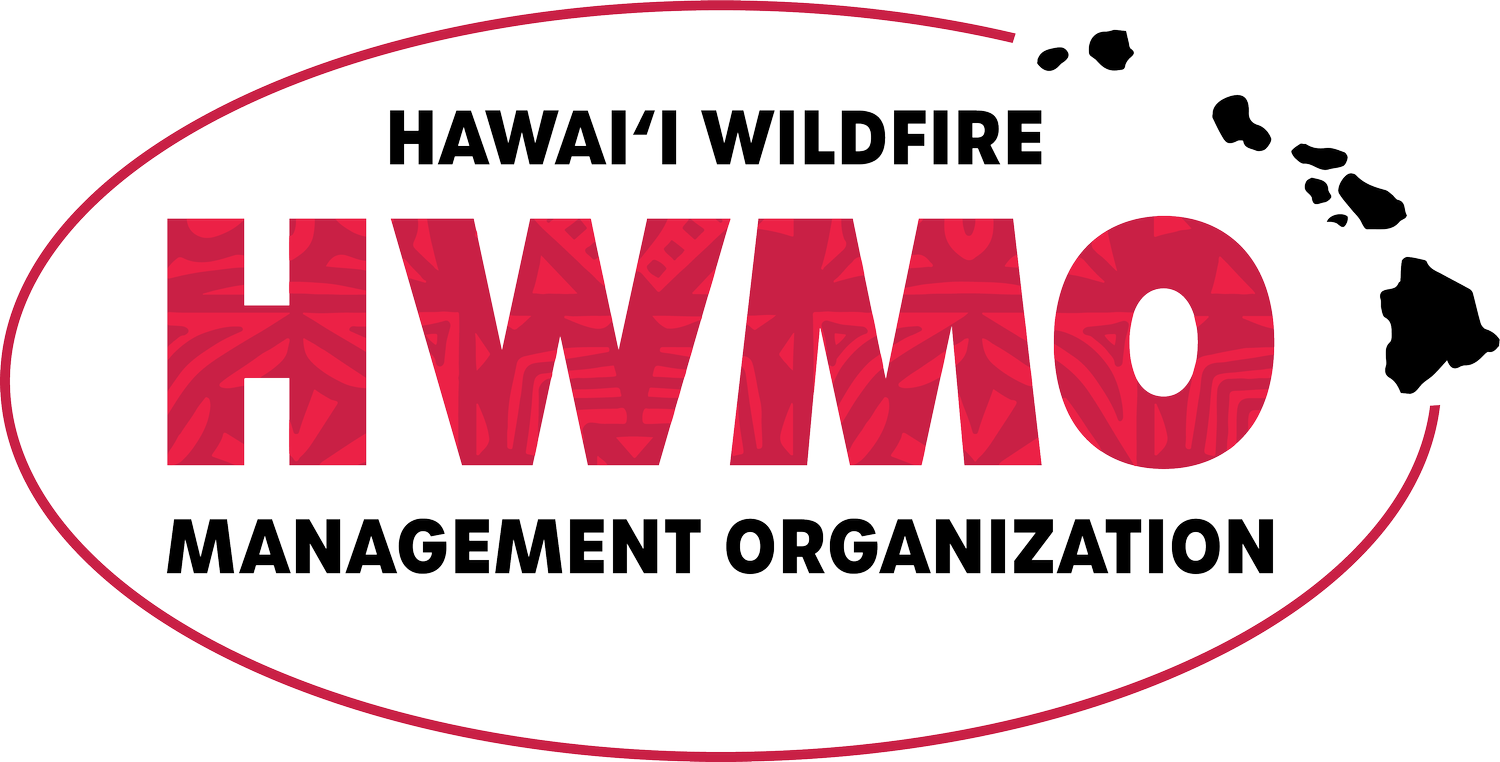HWMO's Mike Tomich removes aloe stalk in living fuelbreak as example of fuels reduction measures that can be taken.
Around 2005, the residents of Waialea and HWMO began discussing the establishment of a living (or shaded) fuelbreak along the mauka edge of the community to increase fire protection for homes in the subdivision.
HWMO had a few goals for the project:
1) Fuels conversion and reduction of grass maintenance within the fuelbreak.
2) Utilizing lessons learned in establishing the fuelbreak to aid similar efforts.
3) Assist the Waialea community in additional, adjacent fuels reduction along the fuelbreak and the extended community wildland interface.
Over the years, HWMO has been able to check off each of its goals, helping protect Waialea from the ever-looming threat of wildfires in the highly-trafficked area.
HWMO's VP Sam Patten is giddy to find a community fire hose.
To help move Waialea enter the next phase of wildfire protection, HWMO will be assisting the community through the Firewise Communities process. On January 12th, a group of community members met with HWMO's Community Outreach Coordinator Pablo Beimler, President Mike Tomich, and Vice President Sam Patten. The crew toured the living fuelbreak and adjacent State Parks lands to conduct the first part of a Firewise Community Hazard Assessment and to discuss proposals of project ideas they would introduce to the State Parks Superintendent, Dean Takabayashi, who they would meet that Friday.
On January 15th, more than a dozen community members joined HWMO and State Parks reps to tour the northern end of the community. The discussions ranged from the health of the reef to the fuel buildup in the gulches to the incredible fuels reduction work already being done by the State at the Beach 69 facilities.
Group of community members, HWMO reps, and State Parks officials tour the area to examine potential project opportunities.
HWMO was pleased to see the great collaborative energy amongst community members and agency officials - this will open up the pathway to work on fuels reduction projects conjunctively on State Park lands that abut the community.

